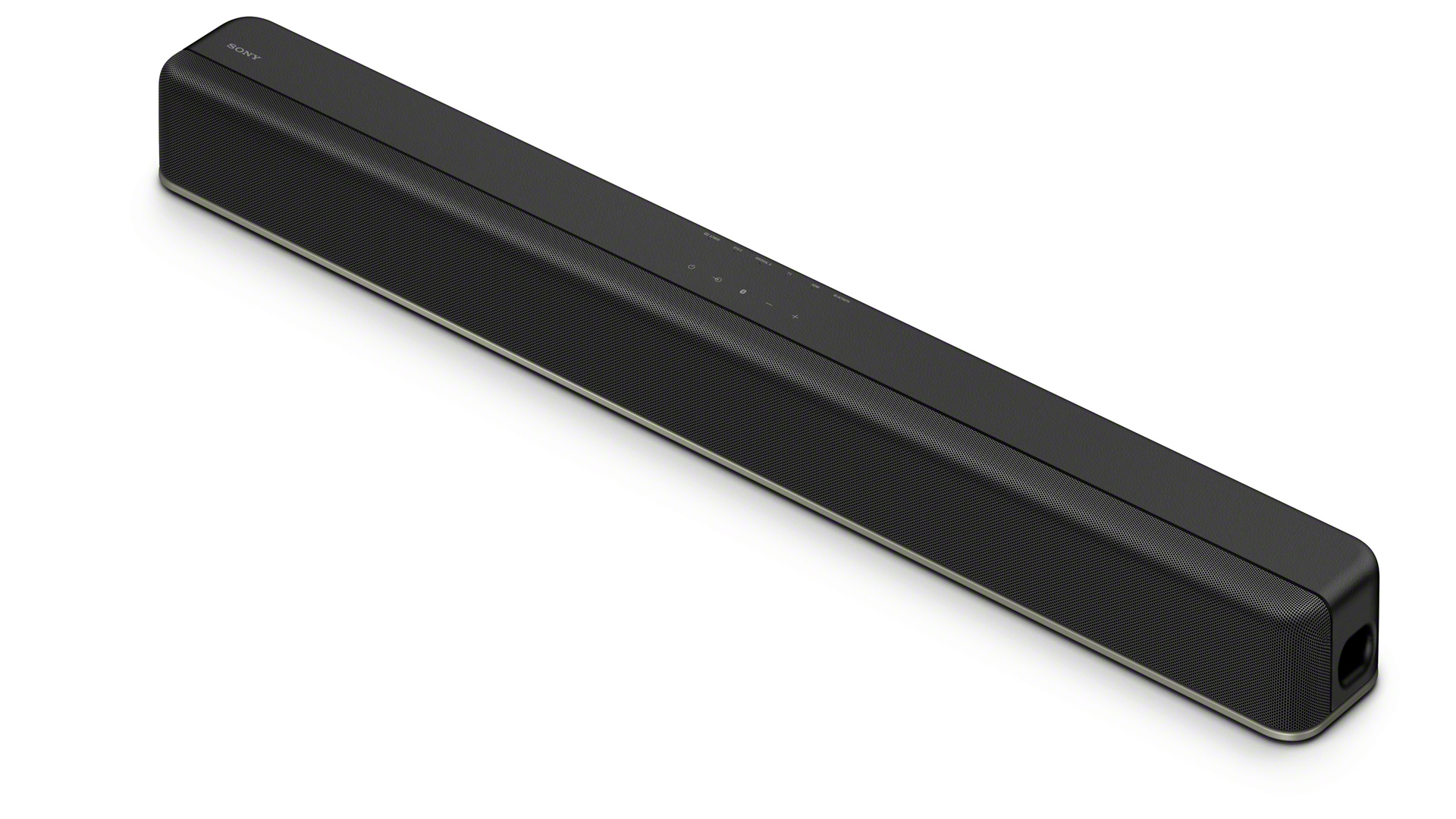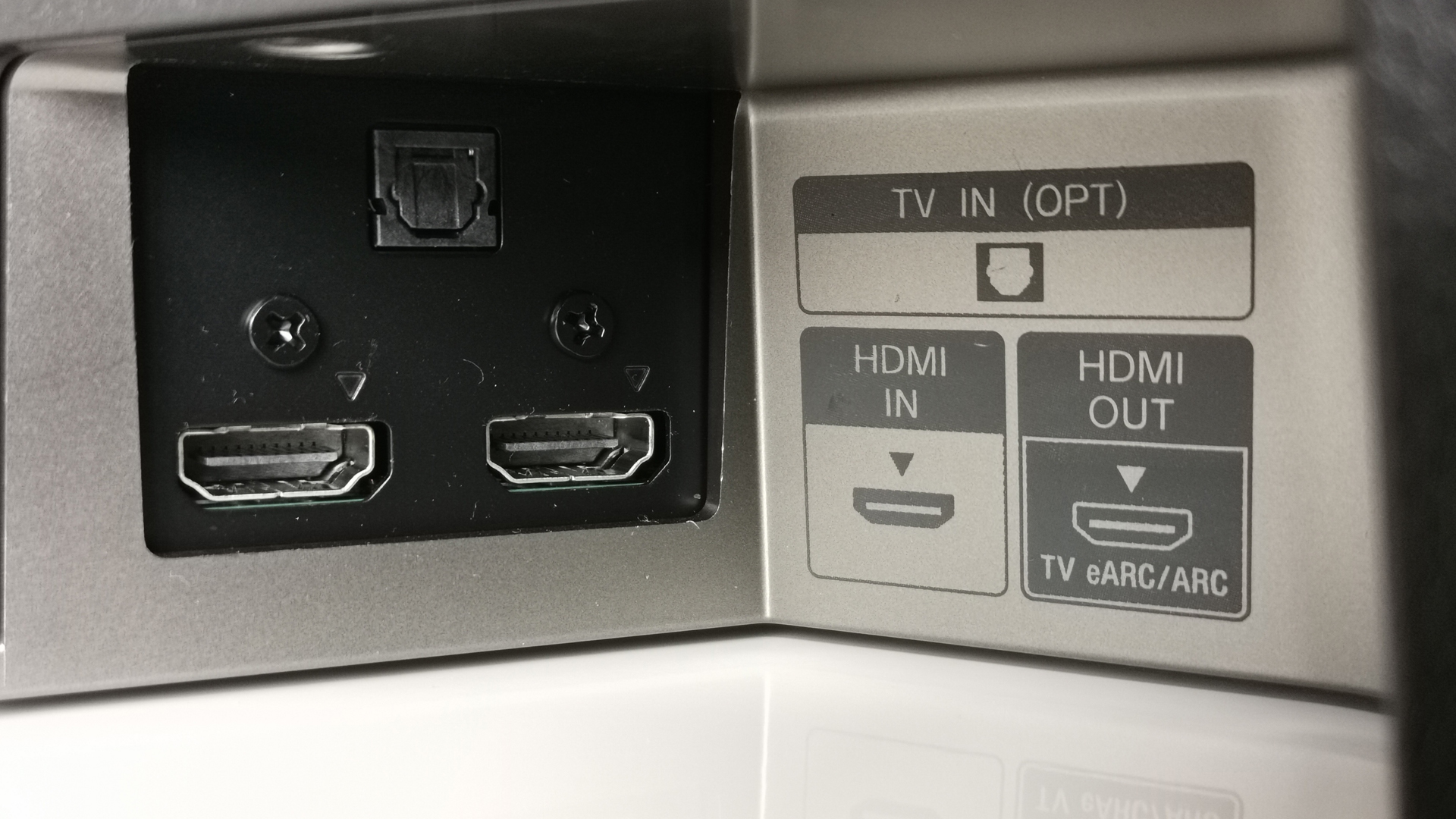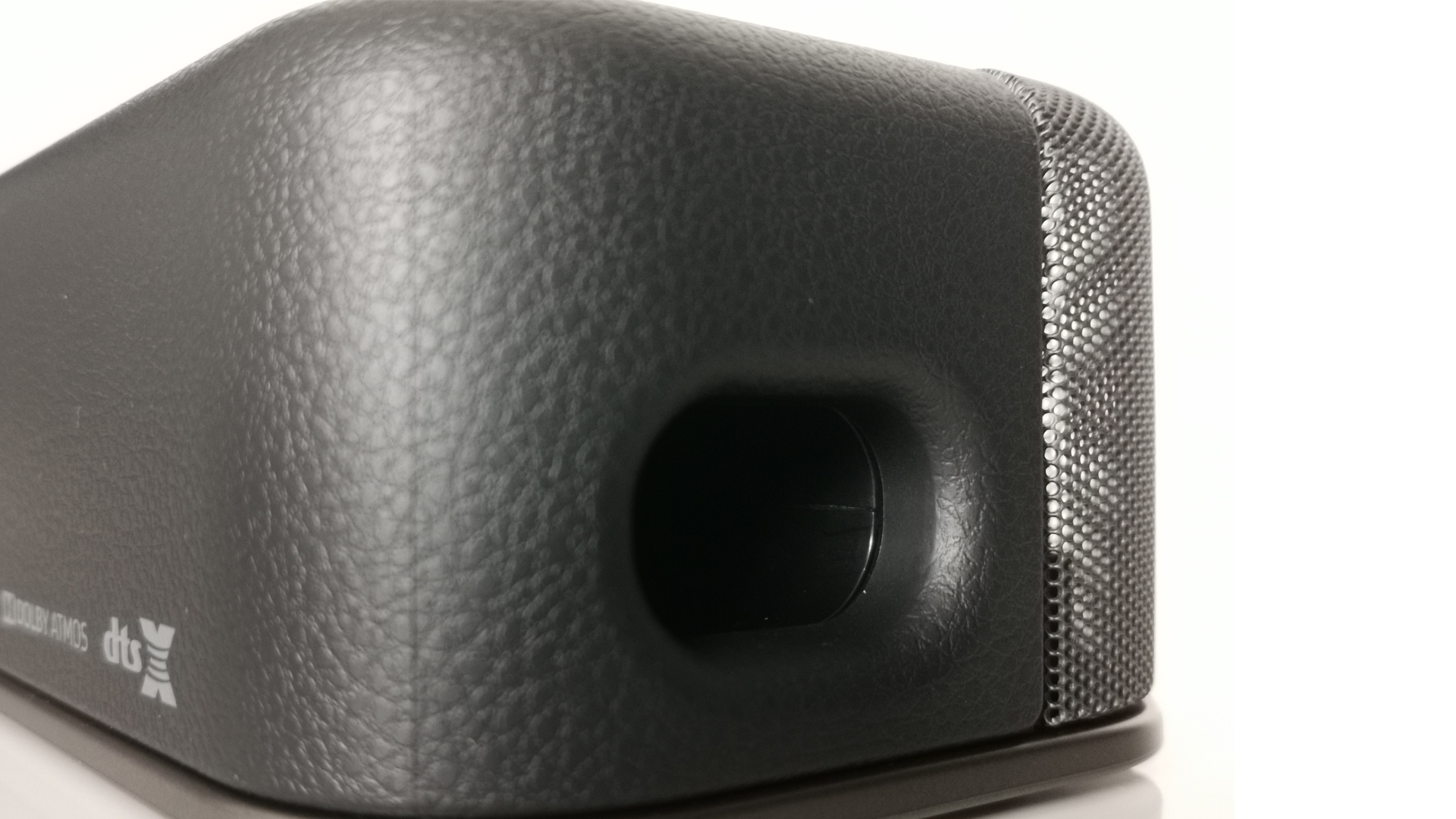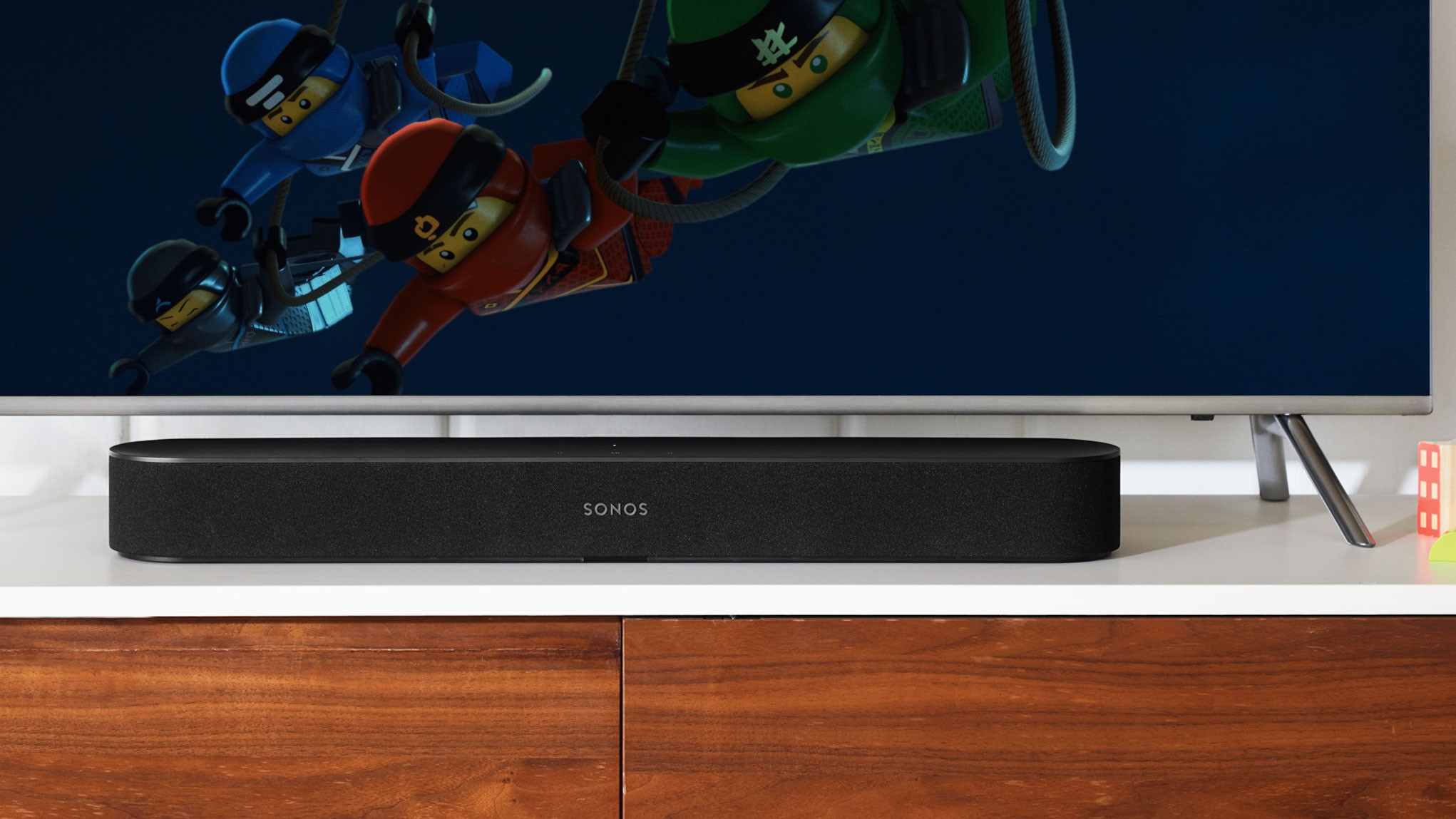Sony HT-X8500 Soundbar
If you find the very idea of a simplified 3D soundbar preposterous, you’re not alone. We all know that Dolby Atmos relies on height information to create a truly immersive soundstage, but like its more expensive HT-ZF9 predecessor, the new Sony HT-X8500 uses advanced DSP audio processing to compensate for the lack of dedicated up firing drivers.
Sure, it comes with some caveats, but the $299 (£350, AU$599) HT-X8500 was among the best soundbars on the planet in 2019 – and it still deserves a place there in 2021. In fact, now that it's a little older, you should be able to find it discounted, making it an even better option to consider.
Design
The HT-X8500 is a self-contained audio system. There’s no separate wireless subwoofer, nor extraneous wireless surround speakers. It’s a smart, singular soundbar designed to fit just about anywhere.
The subwoofer may be built-in, but the bar remains pleasingly slim. A modest 89cm wide, it’s suitable for TVs measuring between 49-55-inches.
The cosmetic finish has a sense of style. The front-facing array is protected by a smart rolled grille, while a gun metal grey trim adds interest. Up top are touch-sensitive buttons, for power, input selection, volume and Bluetooth pairing.
Connectivity is relatively sparse, limited to just two HDMIs, one an input, the other an output with eARC. There’s also an optical digital audio input, for when ARC isn’t available. The 4K HDMI board is compatible with Dolby Vision, HDR10 and HLG.
Overall, the HT-X8500’s compact design is easy to live with, with no separate subwoofer to claim floor space. Instead we get twin forward facing woofers. Perhaps, surprisingly for a Dolby Atmos soundbar, there are no up firing drivers and HDMI connectivity is limited.

Features
Sony has opted for a stripped back feature set here to keep costs down. There's no smart Wi-Fi connectivity, or on-screen menu. Instead the soundbar communicates via LED lights, which signpost Dolby Atmos and DTS-X sources, as well chosen inputs.
The bar is driven by a thin finger-style remote control, which despite its dimensions is not shy of buttons. All the various sound presets are given prominence, alongside processing modes.
Such simplicity makes this an easy system to live with. As it doesn’t depend on reflected sound to create its virtual surround effects, you can simply sit it in front of the telly, or wall mount. There’s no calibration required.

Performance
Any reservations we had about the performance of this mid-ranger were blown away when powered up - this soundbar is convincingly cinematic.
The key to the HT-X8500’s gutsy performance is Sony’s proprietary Vertical Sound Engine. Working with Dolby Atmos and DTS:X content, it creates a convincing illusion of wraparound sound that allow Dolby Atmos movies to play with a clear sense of expanded height and width.
Even better, Vertical S doesn’t just work with immersive codecs, either - it can be used as an up-mixer for two channel and conventional 5.1 sound sources too, to similar good effect.
Perhaps the biggest surprise is the internal subwoofer. It may be modest, but this all-in-one thumps like an ogre’s headache. With a bass response down to 50Hz, the rumbles aren’t seismic, but they’re persistent. Some may even find the balance of those twin forward-facing woofers a little overbearing at times, but their sheer enthusiasm is hard to fault.

But this bar isn't perfect. Sony claims the HT-X8500 approximates a soundfield comparable to an Atmos 7.1.2 system, which is something of a stretch.
The HT-X8500 doesn’t produce compelling overhead audio in the same vein as a 7.1.4 system, but does create a soundstage as high as it is wide. Parked in the sweet spot (there is one, so make sure you’re sitting in it), we were definitely left with the impression that sounds were whipping out either side of our listening position. Everest (Blu-ray, in Dolby Atmos) proves suitably chilling. When the big storm hits, the HT-X8500 unleashes projectiles of ice left and right. It’s enough to make you shiver and shudder.
In truth, there’s not a great deal of difference between a genuine 3D movie mix and advanced channel codecs like Dolby True HD and DTS-HD MA once they’ve been through Sony’s Vertical Sound processor - and that speaks volumes about the DSP technology Sony has developed with this bar.

Other soundbars worth considering
If you can live without Dolby Atmos, the Sonos Beam is a viable alternative to the HT-X8500. It’s a similarly compact, high performance offering, albeit one designed for those with (or planning to buy) a Sonos multiroom wireless system. It combines musicality with a lively performance, and can work with Amazon Alexa and Google Assistant.
For comparable filmic thrills, there’s the Panasonic SC-HTB900 (available outside the US), a Technics-tuned 3.1 system. Like this Sony, it can decode Dolby Atmos and DTS:X, and relies on sonic processing to compensate for a lack of upfiring drivers. It comes with a separate subwoofer, and sounds wonderful with most sources, but you’ll pay considerably more for it.
Verdict
Given that rival Dolby Atmos compatible soundbars typically sell for twice the price, Sony’s HT-X8500 warrants an easy recommendation. Cost-cutting can be attributed to connectivity and features but what’s genuinely confounding is just how great the HT-X8500 sounds. If you want a home theatre sound system that won’t dent your budget, it’s probably the best option to come around this year.
- Here's our list of the best soundbars you can buy today
0 comments:
Post a Comment